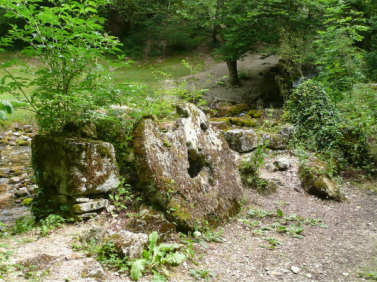Cultures

Fredosor.com
Culture is the sum of attitudes, values and
ways of doing things that you find in a society
or community, and which is communicated and transmitted through different types of codes
and rituals.
In its current understanding, the term culture offers at least two lines of interpretation. Firstly, there is the connotation with the process of cultivation or improvement, which derives from agriculture and horticulture, and which finds its expression in the involvement in education, literature and the arts. Secondly, there is the use of the concept in anthropology, where culture is described by the sum of attitudes, values and ways of doing things that you find in a society or community, and which is communicated and transmitted through different types of codes and rituals.
In entering this subject, we can take a spatial approach (i.e. look at different cultures as they appear around the world), a timeline approach (i.e. look at how culture in a given area evolves over time), or study particular activities with a high cultural profile (i.e. activities which are central in the expression of different cultures around the world).
Spatial starting point: If you wish to approach the idea of culture from a spatial starting point, you will of course find vast areas of interest, with each place in the world showing its own particularities. More on this here.
Timeline starting point: Approaching the notion of human culture from a timeline starting point is no less fascinating. More on this here.
Activity starting point: This third starting point for approaching the notion of culture, looks at how different cultures have expressed themselves through the different types of activities of humans in these respective societies. More on this here.
A more complete overview of the vast array of ancient cultures can be had by looking at the following alphabetical list (derived from a list compiled by the British Museum) : A: Achaemenids, Akkadian, Aramean, Assyrians, Aztecs; B: Babylonians, Bronze Age, Byzantine; C: Canaanites, Carolingians, Celts, Cycladic; E: Early Christian, Edo (Japan), Elamites, Etruscans; F: Fatimid, Franks; G: Greek Archaic, Greek Classical, Greek Oriental; H: Halaf, Hellenistic, Hittites, Huastecs, K: Kassites, Kushan; L: Lombards, Luristan; M: Mauryan, Maya, Medes, Medieval Europe, Meiji (Japan), Meroitic (Sudan), Merovingians, Middle Kingdom (Egypt), Minoan, Mitannian, Mughal, Mycenaeans; N: Nasca, Neo‐Babylonian, New Kingdom (Egypt); O: Old Kingdom (Egypt), Olmec, Ostrogoths, Ottoman; P: Parthians, Phoenicians, Picts, Predynastic (Egypt), Ptolemaic (Egypt); Q: Quimbaya; R: Roman Britain, Roman (Egypt), Rome (The Empire), Rome (The Republic); S: Sabaean, Sasanian; T: Tudor; U: Umayyad, Arartian; V: Vandals, Victorian, Vikings, Visigoths; Z: Zapotec, Zhou.
The notion of culture in contemporary expressions is elaborated in the UNESCO thesaurus. Another enlightening view of the notion of culture was given by professor Kwame Anthony Appiah in his BBC Reith Lecture on the 8th of November, see www.bbc.co.uk/programmes/b081lkkj
Culture and identity are notions that people have strong attachments to, and people's feelings about them may run deep in their consciousness, even if the notions themselves are not clearly identified. Globalization has for a long time challenged traditional cultural life and undermined the sense of identity present in local communities. This becomes clear if we try to reflect on the process of vanishing borders.
In entering this subject, we can take a spatial approach (i.e. look at different cultures as they appear around the world), a timeline approach (i.e. look at how culture in a given area evolves over time), or study particular activities with a high cultural profile (i.e. activities which are central in the expression of different cultures around the world).
Spatial starting point: If you wish to approach the idea of culture from a spatial starting point, you will of course find vast areas of interest, with each place in the world showing its own particularities. More on this here.
Timeline starting point: Approaching the notion of human culture from a timeline starting point is no less fascinating. More on this here.
Activity starting point: This third starting point for approaching the notion of culture, looks at how different cultures have expressed themselves through the different types of activities of humans in these respective societies. More on this here.
A more complete overview of the vast array of ancient cultures can be had by looking at the following alphabetical list (derived from a list compiled by the British Museum) : A: Achaemenids, Akkadian, Aramean, Assyrians, Aztecs; B: Babylonians, Bronze Age, Byzantine; C: Canaanites, Carolingians, Celts, Cycladic; E: Early Christian, Edo (Japan), Elamites, Etruscans; F: Fatimid, Franks; G: Greek Archaic, Greek Classical, Greek Oriental; H: Halaf, Hellenistic, Hittites, Huastecs, K: Kassites, Kushan; L: Lombards, Luristan; M: Mauryan, Maya, Medes, Medieval Europe, Meiji (Japan), Meroitic (Sudan), Merovingians, Middle Kingdom (Egypt), Minoan, Mitannian, Mughal, Mycenaeans; N: Nasca, Neo‐Babylonian, New Kingdom (Egypt); O: Old Kingdom (Egypt), Olmec, Ostrogoths, Ottoman; P: Parthians, Phoenicians, Picts, Predynastic (Egypt), Ptolemaic (Egypt); Q: Quimbaya; R: Roman Britain, Roman (Egypt), Rome (The Empire), Rome (The Republic); S: Sabaean, Sasanian; T: Tudor; U: Umayyad, Arartian; V: Vandals, Victorian, Vikings, Visigoths; Z: Zapotec, Zhou.
The notion of culture in contemporary expressions is elaborated in the UNESCO thesaurus. Another enlightening view of the notion of culture was given by professor Kwame Anthony Appiah in his BBC Reith Lecture on the 8th of November, see www.bbc.co.uk/programmes/b081lkkj
Culture and identity are notions that people have strong attachments to, and people's feelings about them may run deep in their consciousness, even if the notions themselves are not clearly identified. Globalization has for a long time challenged traditional cultural life and undermined the sense of identity present in local communities. This becomes clear if we try to reflect on the process of vanishing borders.